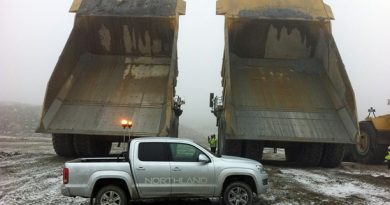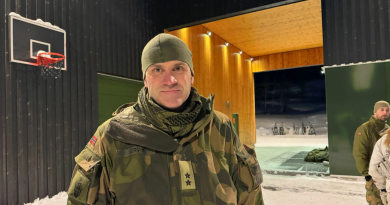Finnish company joins mining project in Russian High Arctic

Mining technology company Outotec will take part in the development of the Pavlovsky zinc and lead mine in Novaya Zemlya, in the Russian Arctic.
It is the high Arctic and conditions are extreme. Not only is the climate harsh. This is also an area that is strongly militarized.
Despite the significant national security component in the project, the Finnish mining technology company Outotec has been chosen as a key partner in the development of the Pavlovsky project, one of the world’s biggest deposits of zinc and lead resources.
Company President and CEO Markku Teräsvasara on Friday signed the partnership deal with Igor Semonov, Director of the First Ore-Mining Company. The deal was inked during the St. Petersburg Economic Forum.

The Pavlovsky holds an estimated 2.48 million tons of zinc and 549,000 tons of lead. It is developed by First Ore-Mining Company, a mining subsidiary of state nuclear power company Rosatom.
The agreement includes joint efforts in search of perspective design and development solutions, as well as delivery of equipment, installation and launch of the processing plant, Rosatom informs.
“An objective for both parts will be to find the best and most reliable economical and environmental concept for the processing plant,” Markku Teräsvasara says in a comment.
The plant will have a production capacity of up to 3.5 million tons of concentrates per year.
The Pavlovsky was discovered in 2001 and the mine was originally to come into production in 2019.
The deposit includes a 12 square km area located about 16 km from the coast. A projected seaport will allow vessels with a deadweight of up 8000 ton to dock.
Engineers in summer of 2018 worked in the nearby Bezimyannaya Bay to prepare the ground for the major infrastructure object.
The new seaport is reported to cost up to 6 billion rubles (€81.5 million). Construction of the mine is due to start in 2020 and production launch in 2023.
Rosatom considers building a small-scale nuclear reactor for the project.
Novaya Zemlya is closed military area strictly controlled by the Russian Armed Forces.
Between 1973 and 1975, the southern island of Novaya Zemlya was used for larger underground nuclear tests. Of the seven detonations that took place in the area, several ventilated radioactive gases to the atmosphere because the explosions were not deep enough in the ground.
Related stories from around the North:
Canada: Canada’s northern territories among world’s most attractive mining regions for investors, survey says, CBC News
Finland: Gold mine in southern Finland to shut down after court denies appeal, Yle News
Norway: Minister downplays environmental impact of planned mine in Arctic Norway, The Independent Barents Observer
Russia: Russian miners dig deeper into vast Kola nickel reserve, The Independent Barents Observer
Sweden: Iron mine in northern Sweden to restart production, The Independent Barents Observer
United States: Alaska: Mining opponents ask for investigation into Pebble’s parent company, Alaska Public Media



